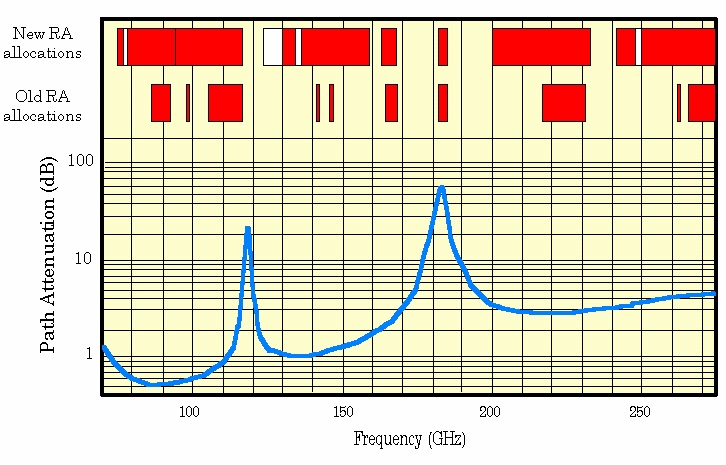Big wins for radio astronomy at the World Radiocommunication Conference!
In the last issue of the ATNF News we reported on radio astronomy preparations for the World Radiocommunication Conference (WRC-2000), a month-long meeting to be held by the International Telecommunication Union (ITU) in Istanbul during May, 2000. The purpose of the meeting was to revise pre-selected parts of the ITU Radio regulations which form the basis of planned international usage of the radio spectrum.
Several of the agenda items for the meeting involved radio astronomy. The most important item concerned spectral allocations to radio astronomy (and the Earth-exploration satellite service) in the frequency range 71-275 GHz. For the first time since 1979 this would enable radio astronomy to improve its allocations in this range in order to protect the greatly increased radio astronomy usage of the band. We have already reported on the radio astronomy preparations for the meeting, and the development of a set of allocation proposals for which widespread approval had been obtained before WRC-2000 began.

Figure 1: The new radio astronomy allocations for 71-275 GHz. Unfilled blocks represent secondary allocations.
WRC-2000, with about 2,500 attendees, has now come and gone, and we are happy to report that the astronomers' careful preparations have been well and truly rewarded. More than a dozen radio astronomers participated in the meeting and carefully nursed the proposals through the various committees which had to approve them. The result was total success; all the proposals for improved allocations (almost one hundred were needed to cover the 71-275 GHz band) were finally adopted by WRC-2000. Even extra protection proposed only by Asia-Pacific countries for some spectral lines not covered by the allocations was approved.
So what have we gained? The results are shown in the accompanying figure (figure 1). The line profile shows the variation of zenith atmospheric attenuation with frequency. Atmospheric `windows' containing attenuation minima occur in the ranges 70-115 GHz, 125-175 GHz, and 195-275 GHz. The new radio astronomy allocations now extend across most of the windows, and for the central window in particular, the improved protection is enormous. Note that in addition, an allocation covers the H2O line at 183 GHz. It was considered that the line may be useful for phase correction during the operation of future high-elevation facilities such as the Atacama Large Millimetre Array (ALMA).
We should point out, however, that as a consequence of the bargaining to increase the allocations, some of the allocated frequencies will have to be shared with ground-based fixed, mobile or satellite uplink services. If these services are developed, their operations will have to be coordinated with radio astronomy however, it is commonly believed that this will not be a problem at these high frequencies where ground-level atmospheric attenuation is high.
Unfortunately, the situation at lower frequencies is not so rosy. WRC-2000 provided no opportunity to review the radio astronomy allocations. In any event, the spectrum is so congested with services that it is difficult to see how radio astronomy could gain more allocations without impacting on the operation of other existing services. The only possible gain may be in the protection of allocated bands from unwanted emissions of transmitters operating at frequencies outside those bands. A dedicated task group has been working on this problem for several years, and this will continue. Hopefully this work will result in improved radio astronomy protection levels which can be included in the Regulations at the next WRC. Because of the low-frequency situation, radio astronomers planning next-generation low-frequency facilities such as the SKA, which will operate with large bandwidths, are pinning their hopes on developing effective interference mitigation strategies as well as persuading governments to proclaim `radio-quiet' reserves for the facilities.
John Whiteoak & Tasso Tzioumis, ATNF
